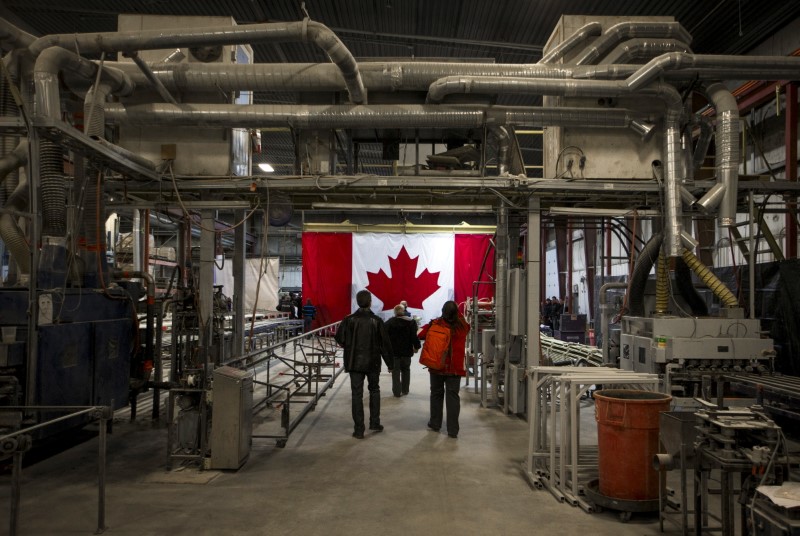By Ketki Saxena
Investing.com -- Canadian manufacturing activity lost further momentum in July, hitting its lowest level since June 2020 and the initial onset of the coronavirus pandemic the S&P Global (NYSE:SPGI) Canada Manufacturing Purchasing Managers' Index (PMI) showed earlier today.
The S&P Global Canada Manufacturing Purchasing Managers' Index (PMI) fell to a seasonally adjusted 52.5 in July from 54.6 in June. A reading above 50 shows growth in the sector.
Production and New Orders Slow; International Orders Dwindle
The contraction in the PMI was driven by renewed declines in output and new order, which manufacturers blame partly on poor material availability and weak demand - particularly from outside Canada.
Both the output and new orders indexes fell below the 50 threshold for the first time since June 2020, ending two years of new order growth with export sales a particular drag on the sector. New international orders declined for a second straight month and at a quicker rate than in June.
Employment growth also fell to its lowest level in nearly 18 months as the rate of job creation slowed. On a positive note, both input and output price inflation moderate to five-month lows, and manufacturers in Canada remained optimistic about their output levels in the year ahead.
Implications for the Canadian Economy
Today’s data “reveals another slowdown in operating conditions in Canada's manufacturing”, as per Shreeya Patel, Economist at S&P Global Market Intelligence.
However, the manufacturing slowdown does not come as a surprise with a manufacturing slowdown widely expected as the Canadian economy cools and interest rates rise sharply following the Bank of Canada’s rate-hike spree in recent months.
The slowing in international orders is also not unexpected, as the U.S. economy - Canada’s largest trading partner - also faces a contracting economy on the brink of - or possibly in - a recession. It’s also worth noting that the Canadian economy has followed the U.S. into nearly every recession.
So the slowdown isn’t really a question at this stage; the big question is how aggravated and long-lasting the contraction will be. As per S&P Global, Canadian “Firms remain cautiously optimistic about their 12-month outlook for output”, as they “Hope price pressures continue to ease and demand from both international and domestic markets improves”, even as worries of a recession and a rising rate environment tempered optimism.
The moderating price pressures of both raw materials and manufactured products provided somewhat of a silver lining, indicating that the Canadian central bank’s rate-hike spree is beginning to have its intended effect, but the cost on the Canadian economy for now remains uncertain, and like its larger Southern counterpart, close to touch-and-go on a recession.
The Bank of Canada has raised its benchmark interest rate by 2.25% since March to a level of 2.50%, with money markets expecting further tightening in the coming months. Recent indicators of a cooling economy are unlikely to slow the Canadian central bank's aggressive path of monetary policy tightening, as it remains forcefully committed to tackling inflation, which it believes is a greater worry than the risk of recession.
